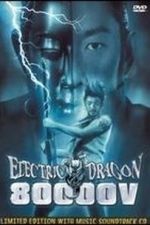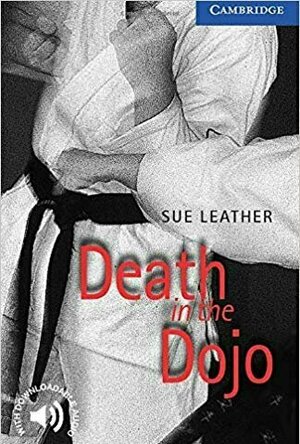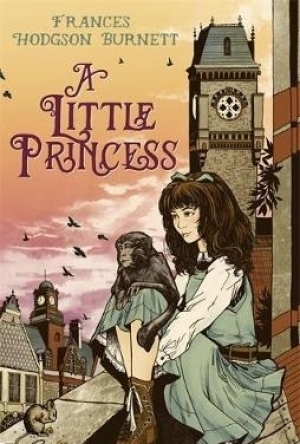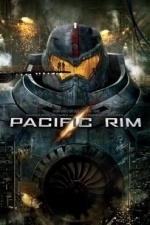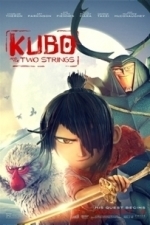
Baby Monitor 3G
Lifestyle and Health & Fitness
App
The First HD quality multiplatform Baby Monitor is here! BABY MONITOR 3G is a universal video and...

Voice Answer
Business and Reference
App
Voice Answer gives answers on many topics and can assist you with a lot of tasks. The stunning 3D...
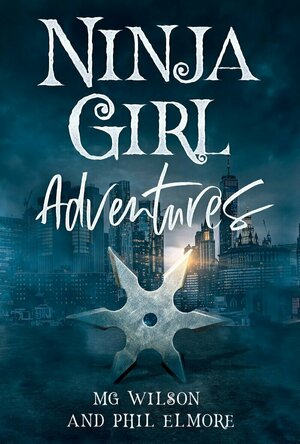
Ninja Girl Adventures (Ninja Girl Adventures #1)
Melissa Wilson and Phil Elmore
Book
Sister Power at It’s Best Moira Mackenzie is just 14 years old. Her sister Mindy is 15, and...
Young Adult Thriller

PES CLUB MANAGER
Games and Entertainment
App
The "PES" soccer simulation game has been played by more than 25 million users around the globe....

Twilight Struggle
Tabletop Game
"Now the trumpet summons us again, not as a call to bear arms, though arms we need; not as a call to...
Boardgames 2playergames PoliticalGames HistoricalGames
Chris Sawin (602 KP) rated Electric Dragon 80.000 V (2000) in Movies
Jun 18, 2019
Electric Dragon 80,000 V is a beyond weird cinematic experience. It clocks in at a little under 55-minutes, so calling it a full-length movie may be a bit of an overstatement. Written and directed by Gakuryū Ishii (credited as Sogo Ishi, he has also directed Labyrinth of Dreams and Angel Dust), the Japanese film is visually similar to Tetsuo, the Iron Man but is more like an extended music video that collided with the visuals of a live-action anime or manga. Ishii used the leftover funds from Gojoe: Spirit War Chronicle to make Electric Dragon 80,000 V while recruiting Asano and Nagase who were the two main leads in Gojoe.
Having nothing else in common with Gojoe, Electric Dragon 80,000 V is absolutely its own beast. The film’s biggest strength is its cinematography. With Norimichi Kasamatsu (Korean filmmaker Lee Song-il’s 2013 remake of Unforgiven) as the film’s cinematographer, being entirely in black and white allows the visuals of the film to bleed off the screen. Some of the most unique shots are when Dragon Eye is playing guitar as the drastic lighting and creative perspective are just what you’d expect from someone taking all of their frustrations out on a guitar; incredibly angry and in your face. There’s a scene in the second half of the film where Thunderbolt Buddha has gotten Dragon Eye’s full attention and Dragon Eye is moving through rooms without moving himself. He appears to be floating from room to room and it allows you to realize how he’s feeling at that particular point in the film as if it’s all a bad dream.
The music may be what makes or breaks the film for the viewer as it tends to walk a thin line between catchy rock music to nothing but loud, distorted noise with screaming. The film is noisy in every sense of the word. Whenever Dragon Eye starts playing his guitar, it often just sounds like noise. It fits the tone of the film perfectly since it complements the concept of channeling 80,000 volts of electricity through a guitar. That would probably sound more like amplified noise than polished music. If you’re not a fan of loud, heavy music then it may affect your judgment of the film.
Electric Dragon 80,000 V is an unusual gray scale experiment, but it’s certainly innovative and unlike anything else you’ve ever seen. It’s not a remake and it’s not an adaptation. It’s an original film that stands on its own, but its radical plunge into such severe weirdness could be a turnoff for some viewers as its manga inspired influences flow excessively through every frame surrounding every sequence with boisterous and heavy guitar riffs; think like a shorter and black and white version of Scott Pilgrim vs. the World that somehow fused with the FLCL anime. This was discovered while digging through Tadanobu Asano’s filmography and if you’re fan of his stuff, then Electric Dragon 80,000 V comes highly recommended.
Electric Dragon 80,000 V isn’t available to stream anywhere, was never released on Blu-ray (this would be amazing in high definition), and the DVD is out of print. A high quality version of the DVD cover had to be pulled from eBay of all places since Google can’t seem to find one otherwise that isn’t tiny in size. The DVD is available on Amazon from third party sellers for $39.99 plus $3.99 shipping in new condition and $29.98 with free shipping in used condition. A pre-owned DVD is running $69.99 to $79.99 on eBay with free shipping. It does look like someone uploaded a 90-minute version of the film on YouTube with English subs and that looks to be the best way to see the film at the moment.
Ivana A. | Diary of Difference (1171 KP) rated Death in the Dojo in Books
Feb 3, 2020
<a href="https://diaryofdifference.com/">Blog</a>; | <a href="https://www.facebook.com/diaryofdifference/">Facebook</a>; | <a href="https://twitter.com/DiaryDifference">Twitter</a>; | <a href="https://www.instagram.com/diaryofdifference/">Instagram</a>; | <a href="https://www.pinterest.co.uk/diaryofdifference/pins/">Pinterest</a>;
<img src="https://diaryofdifference.com/wp-content/uploads/2019/11/Book-Review-Banner-30.png"/>;
I remember reading The Death in the Dojo a few years ago. I still remember the story and the feelings it brought me. This is a story about a mystery, about karate and the love between a daughter and her dad. I need to just say that this book has and always will have a special place in my heart.
I have been in a dojo since I remember myself. And the sensei is no one else, but my dad. From the very first kata and my first wins and losses, till the days when I started becoming a national champion and travelling across countries, my dad was always the person beside me. The one to guide me and show me the right way. The one to pick me when I fall, and the one who believed in me, when everyone else didn’t.
<a href="https://www.instagram.com/p/BjcxJkkHvqM/?utm_source=ig_embed&utm_campaign=loading">View this post on Instagram</a>
<img src="https://scontent.flhr4-2.fna.fbcdn.net/v/t1.0-9/69274792_10218442591163314_2586922513925668864_n.jpg?_nc_cat=111&_nc_ohc=eAIbM8tluQsAQkJbY13yqjMs4qIoY3HOETTDejocPqnuBjqe2LvSD-gFg&_nc_ht=scontent.flhr4-2.fna&oh=d67564d709a3f04aa23cab0d245d4732&oe=5E79F277"/>;
<b><i>“I went over to the Asano dojo for the last half hour of training and saw a good fight among six black belts. I stood and watched the white gi’s moving quickly round the wooden floor, black belts flying. There was something beautiful about this, more like a dance rather than a fight. It made me feel sad, not to be there doing it. "</i></b>
Even though this book is not the best mystery you will ever read, I doubt that was its real purpose.
I believe that the purpose of this book was to show us a glimpse of what karate really means, to show us the honour, the respect, the persistence we all share in unison.
<b><i>“It was true that the great masters seemed to have an unusual sense of peace around them.”</i></b>
Death in the Dojo starts off when Kate, a journalist, is tasked to investigate the recent murder of the famous karateka Kawaguchi. It is a complete mystery how he would be killed with just one punch called gyaku zuki and die. The mystery is not behind whether it’s possible for him to die from one punch, but the mystery is why he allowed for this to happen. As a master, he is very well able to defend himself against just one punch.
On this note, I have to mention that in the book, the punch is spelled as “yaku-zuki”, which is incorrect.
When this mystery is connected to another mystery that happened many years ago, Kate is determined to find the full truth once and for all.
Even though it is quite a short book, it contains a lot of information and a couple of unexpected plot twists. It captures perfectly the cultural differences between England and Japan, which is shown through the love and relationships between daughters and their dads.
<b><i>“It was my Dad who taught me how to fight. He never treated me any differently than my brother. He showed me how to fight with my fists up when I was five and to get up quickly if I fell down. I was never allowed to give up. … It was a lesson that would be useful to me many times over the years. Whenever something bad happens in my life and I feel like giving up, I hear dad’s voice in my ears, telling me to get up off the floor.”</i></b>
I truly loved this book. It will always stay in my heart. I will keep coming to it when I miss my karate days. I recommend it if you like mysteries and martial arts. Also if you are a fan of the Japanese culture. The ending wasn't the best mystery ending ever, as the story went sort of unfinished, and we didn't truly solve one of the mysteries, but it was still a lovely read for me.
<b><i>This blog post is dedicated to my amazing and one and only dad! I love you! </i></b>
<a href="https://amzn.to/2Wi7amb">Wishlist</a>; | <a
<a href="https://diaryofdifference.com/">Blog</a>; | <a href="https://www.facebook.com/diaryofdifference/">Facebook</a>; | <a href="https://twitter.com/DiaryDifference">Twitter</a>; | <a href="https://www.instagram.com/diaryofdifference/">Instagram</a>; | <a href="https://www.pinterest.co.uk/diaryofdifference/pins/">Pinterest</a>;
The Bandersnatch (199 KP) rated A Little Princess in Books
Nov 7, 2019
There are six film adaptions having been released in 1917, 1939, two in 1995 (One version being Filipino) with the most recent being a Russian film released in 1997. the most well known being the 1995 version being directed by Alfonso Cuaron. There have been seven TV shows based on A Little Princess with the 1973 and 1986 (Maureen Lipton was Miss Minchin) versions being particularly faithful to the books, the 1985, 2006 and 2009 versions were various Japanese anime and another Filipino remake happened in 2007. an episode of Veggietales in 2012 was another version of A little Princess. From 2002 to 2014 there have been several musical adaptions of a little princess as well.
Francis Eliza Hodgson Burnett was born in England on the 24th November 1849 in Cheetham, Manchester, England. When her father died in 1852 her family fell on hard times and Francis was looked after by her grandmother who fuelled her love of reading whilst her mother dealt with the family finances. The family eventually emigrated to the states in 1865 but remained somewhat poor thanks to the end of the American Civil war. Francis started writing in fever trying to help her family get out of the financial hole they were in and did so with her first story being published in the Godey's Lady's book in 1868 eventually being published regularly in its pages alongside Scribner's Monthly, Peterson's Magazine and Harper's Bazaar.
In 1872 Francis agreed to and married family friend Swan Burnett. She continued to write which supported them as they moved to Paris to allow Swan to train as an eye and ear doctor. Francis economised by making clothes for both their sons and for herself. The family returned to the US a few years later where swan managed to set up a doctoring business despite being in debt. For several years afterwards Francis wrote several short stories which were continuously published, Francis eventually turned to children's novels after a meeting with Mary Mapes Dodge the editor of children's magazine St Nicholas. In 1884 Francis set to work on Little Lord Fauntleroy which was serialised in 1885 and published in book form in 1886.
In 1887 Francis returned to England for Queen Victoria's golden jubilee which triggered yearly transatlantic trips between the US and England with her sons. She had fallen ill during this time and had spent time confined to bed, she did however managed to write both The Fortunes of Phillipa Fairfax (only published in the UK) and Sara Crewe or what happened at Miss Minchin's which was rewritten as A Little Princess. In December 1890 Francis and Swans eldest son Lionel died of consumption which spurred his mother into a depression and turn away form the Protestant faith and embrace spiritualism.
In 1898 After their youngest son Vivian finished school, Francis and Swan had divorced (though they had begun to drift apart and were living separate lives several years earlier) and two years later Francis had moved back to England and lived at Great Maytham Hall and married Stephan Townsend, which proved to be a terrible marriage and it ended in 1902. In 1907 Francis returned to the states and spent the next seventeen years in Plandome manor writing several more stories and editing for the Children's Magazine upon the insistence of her Son Vivian. Francis died on October 29th 1924 at the age of 72, she's buried in Roslyn Cemetery and her son Vivian is burred nearby having died in 1937.
I knew of the book as a child but didn't read it until I was a teenager, by then I did know of and had seen the 1995 movie directed by Alfonso Cuaron. The books theme of rising above and succeeding in the face of terrible times is a good thing to reed about. I definitely recommend the book to children and teenagers alike and I give it 9/10.
Gareth von Kallenbach (980 KP) rated Pacific Rim (2013) in Movies
Jun 19, 2019
Enter into the mix Raleigh Becket (Charlie Hunnam), a young Jaeger pilot who, with his brother, pilots the Gypsy Danger mech. It is learned that two pilots are needed to control the mechs as the neural demands were too much for one individual alone. Through a process known as “drifting” the pilots are linked to one another’s minds which allows them each to control one half of the machine in combat situations. Needless to say it is vital that the two pilots are compatible as the connection allows them to see into each other’s minds and memories so therefore having somebody of a compatible nature is key to success.
Six years into the war tragedy strikes leaving Raleigh dissolution and alone. In the ensuing seven years he is working on a last gasp project to build gigantic walls around coastal cities in an effort to stop the alien menace and protect cities. Things have not been going well and due to increasing losses the command has canceled the Jaeger program and ordered the few remaining next to Hong Kong to provide a measure of defense will wall is completed.
This does not sit well with Defense Marshall Pentecost (Idris Elba), who believes that the mechs offer humanity’s best defense against the enemy and as such he seeks down Raleigh and return Sam reluctantly to the program. It is learned that there are only four mechs left and a desperate plan to deliver a nuclear payload through the rift directly to the enemy is put in place. Of course complications arise specifically in the form that Raleigh needs to find a new copilot and by far and away the best candidate for him Rinko (Mako Mori) is being blocked from taking part in the mission by the Defense Marshall. This combined with tension between their rival pilot and Raleigh certainly has him rethinking his place in the mission.
As if this was not complicated enough, base scientist Newton (Charlie Day), is convinced that there is a much bigger threat coming and that their current course of action is not going to be enough to save the day.What follows is an FX heavy spectacle of action as humanity makes a last-ditch stand against the alien apocalypse in spectacular style.
The movie, while entertaining, does strain credibility to a serious extreme even by adventure film standards. We’re supposed to believe that enormous amounts of money have been spent to develop and maintain the defense program when the weaponry aboard the mechs as well as conventional weaponry such as Tomahawk missiles and such could be mounted aboard ships and coastal batteries and deployed with similar success at a significantly reduced cost. We are told that the initial attack took six days to repel using jets and tanks but from my point of view heavy assault gunships, rail guns, cruise missiles, as well as the plasma weaponry shown in the film would certainly do the job from any floating or fixed coastal location.
Even though the 3-D in the movie was converted it was done very well and there were some very good moments of immersion especially during the very well done combat sequences. My biggest issue was that the middle of the film tended to drag as we had a lot of interpersonal dramas play out but they lacked attention and character development that they needed to be fully effective. Despite the extremely solid cast, many of the characters were very thinly developed as the emphasis on the movie was clearly on putting giant robots against giant creatures and unleashing as much carnage and mayhem as possible.
In this regard the film worked however the times in between do not work so well and there is a surprising lack of chemistry amongst many of the leads which undermines the sense of urgency, desperation, and sacrifice which is key to the story.
Charlie Day provides some good comic relief in his role and Hunnam and Elba do a good job with the limited characters that they are given.
While it is not a bad film by any stretch the imagination, it could have been so much more because as it stands now it is basically in the vein of the Toho Godzilla movies just with a bigger budget and better effects.
http://sknr.net/2013/07/11/pacific-rim/
okletmereviewit (4 KP) rated Kubo and the Two Strings (2016) in Movies
May 11, 2018
It seems that his mother only "comes to life" when its night time. And then shortly there after returns to a catatonic state. One day while in the village an old beggar woman who befriended him tells him a story of how she speaks with her dead husband at night during a certain ritual. Kubo, who is confused and longing to know anything about his father who was said to be the greatest Samurai, goes to the ancestral resting place and tries to summon his father.
Time gets away from him and night befalls rather quickly. Soon two masked spectral spirits appear, and tell him that they are his aunts. Kubo is then told the reason he is missing an eye is due to his grandfather who only wanted to have his other eye so that he could join them in the heavens. Kubo begins running back to the village. The two spirits attack and destroy the village. When they are almost upon him, his mother shows up and uses the last of her magics to activate a totem and to create wings to whisk him away to safety, far away from his blood thirsty aunts. Kubo then wakes up in a vast frozen waste land with a monkey looking after him. The monkey begins to address Kubo, telling him that they need to go on this quest to find a magical suite of armor that his father once wore. So Kubo and Monkey set off on a quest. Kubo is awaken by the monkey, saying that the origami papers that he carried in his pack, were flying around and that in his sleep he created an origami Samurai. The same Samurai from his stories. This little paper guardian, shows them the way to the armor's pieces, which consist of a sword, a breast plate, and a helmet. Along the way they come across a Beetle who was once a Samurai who was cursed to live the rest of his life as a beetle. After that the unlikely foursome come across a cave that has the sword in it. But much like Kubos life, it was not an easy task to retrieve it as it awakened a tall skeleton warrior, which they had to defeat. They then come to a large body of water, which Kubo uses his magic and his Samgen to create a boat made out of leaves. Monkey exclaims to him how his power is growing. As they set sail, the little paper Samurai point out that the breast plate is at the bottom of the water. Kubo remembering a story that his mother told him, of eyes that show you what you want to see most, lived at the bottom of the water. Beetle offers to dive in and look for the breast plate as "beetles can hold their breaths for a really long time under water, and are great swimmers." After quite some time passes Kubo dives in after Beetle and the breast plate. Monkey is then attacked by one of the evil aunts. While Kubo is under the water he finds the breast plate, and the eyes. They show him that the Monkey is actually his mother in the form of a spirit totem (MIND BLOWN)...Becoming dazzled by the eyes, he begins to drowned. Beetle swoops in and begins shooting the eyes and rescues Kubo. During this time Monkey is battling one of the aunts and defeats her. Kubo and the gang then continue their quest to find the helmet, which is back at his fathers fort. Once back at the fort one of the aunts reveals to Kubo and to Monkey that Beetle is actually Kubos father. So Kubo now armed with this new knowledge is able to defeat his aunt, but not after losing both his parents again. Kubo then uses his magic, to fly back to his village to adorn the helmet to complete his suite of armor. He then has to battle his grandfather The Moon King. At which point The Moon King transforms into a giant centipede like demon. Kubo uses his wits, and magic, to defeat his grandfather and makes him mortal. In his mortal state he loses his memories, and the village people tell him how he was a just and honest man, and how he was kind. The story ends on an upswing.
Over all the movie was really good. I love how engaging it was, and all the attention to detail they provided in it since it was a stop motion claymation. I highly recommend this for any family night.
